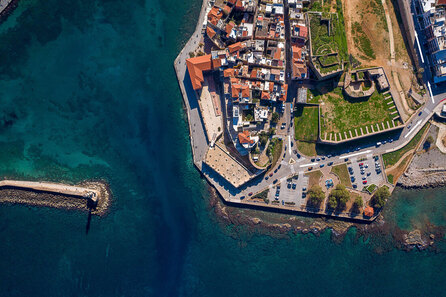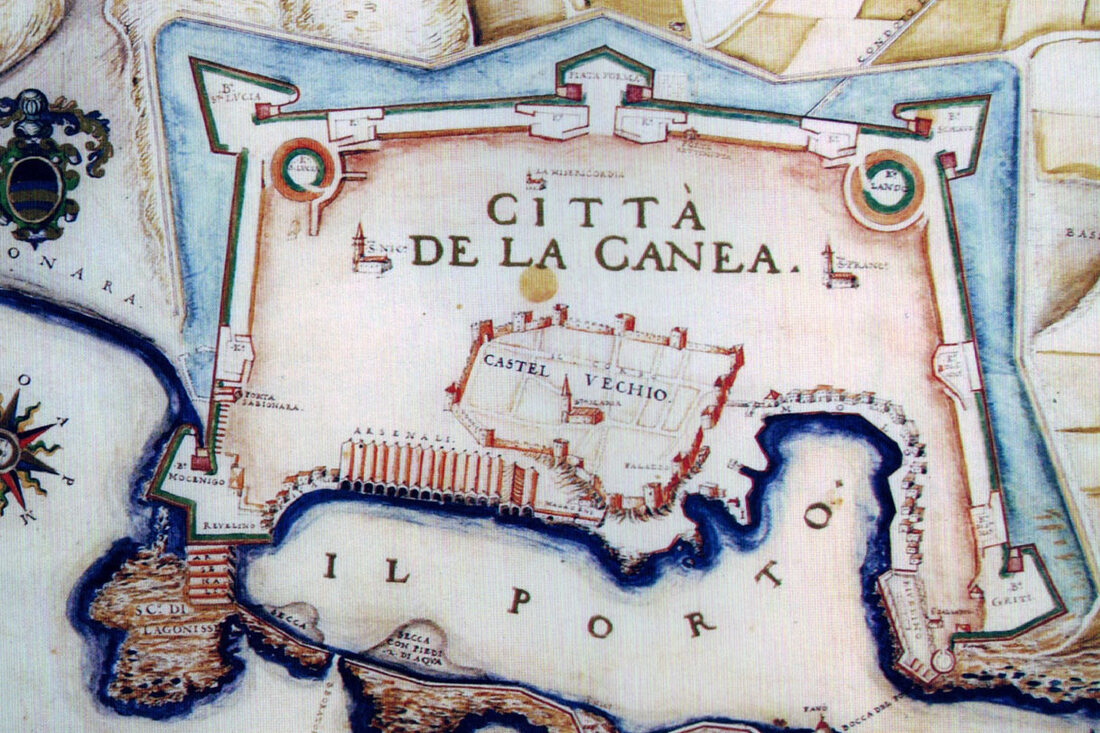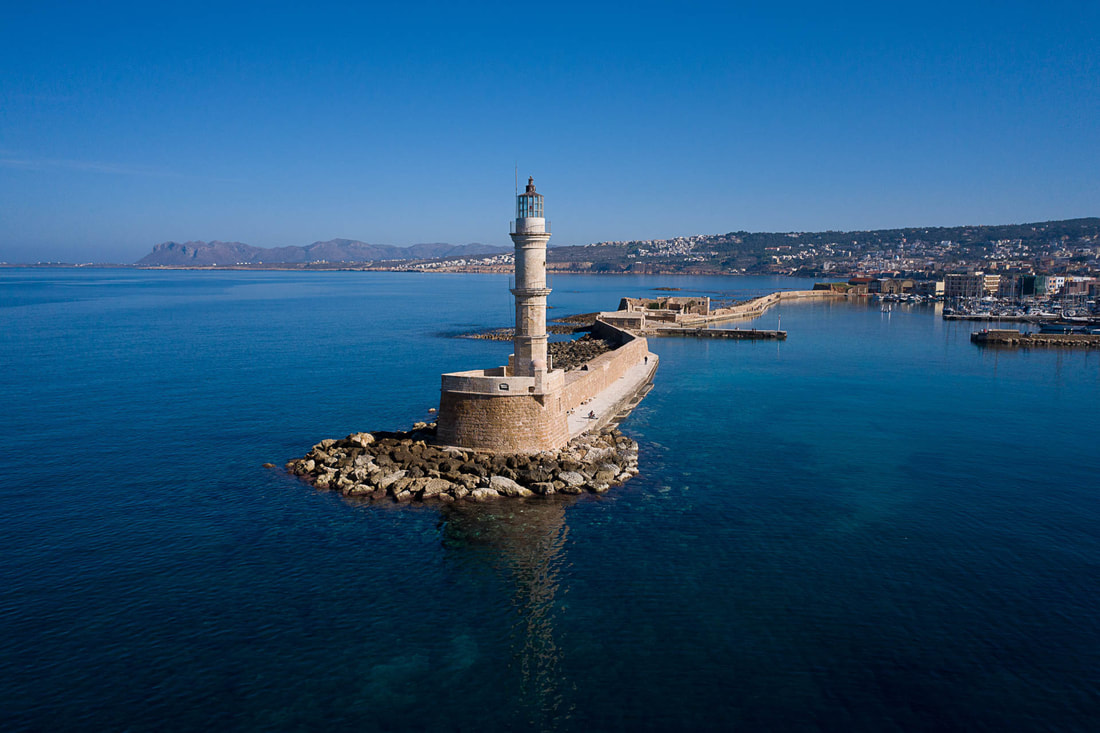Walks in the old town and the Venetian harbour where the Venetian, Turkish, traditional and modern architecture coexist, creating a unique and attractive scenery.
Venetian fortifications
Points of interest: East moat, West moat, Heart-shaped bastions and San Salvatore, Lando, Santa Lucia, Sabbionara bastions "leather street", Municipal Market (Agora)
The Venetian monuments of Chania, which include the fortifications, give Chania its special, cosmopolitan character. Those who love exploring medieval towns will love this walk as, along with the large fortifications of the Venetians, one can see the city of Chania, old and new.
The Venetian monuments of Chania, which include the fortifications, give Chania its special, cosmopolitan character. Those who love exploring medieval towns will love this walk as, along with the large fortifications of the Venetians, one can see the city of Chania, old and new.
Walk from the West moat to the East moat
Walk down Skridlof, known as "leather street", until you reach the Municipal Market. Parts of the Venetian wall can be seen behind the leather shops. Traces of the Venetian walls can also be seen in the ground around the Market.
Continue down N. Fokas street, past the Music school and soon you will reach Santa Lucia bastion and cavalier at the very east of the old town. Only parts of the Santa Lucia are nowadays visible as a large part of the bastion was buried in 1930 under Nikiforos Fokas & Cyprus Street.
Going down Kyprou Street, parallel to the eastern moat where the summer theatre is located today, you arrive at the former eastern gate of the old town, known as Porta Sabbionara (Sabbionara Rampart). Behind the gate is the Sabbionara bastion, also known as Mocenigo, with the relief of the winged lion of San Marco, the emblem of Venice, embedded in the façade. In the rocky area behind is the jetty, which completes the wall and forms the old port of Chania.
Following the above route from San Salvatore to the Sailing Club, is 2.5 kilometres.
Continue down N. Fokas street, past the Music school and soon you will reach Santa Lucia bastion and cavalier at the very east of the old town. Only parts of the Santa Lucia are nowadays visible as a large part of the bastion was buried in 1930 under Nikiforos Fokas & Cyprus Street.
Going down Kyprou Street, parallel to the eastern moat where the summer theatre is located today, you arrive at the former eastern gate of the old town, known as Porta Sabbionara (Sabbionara Rampart). Behind the gate is the Sabbionara bastion, also known as Mocenigo, with the relief of the winged lion of San Marco, the emblem of Venice, embedded in the façade. In the rocky area behind is the jetty, which completes the wall and forms the old port of Chania.
Following the above route from San Salvatore to the Sailing Club, is 2.5 kilometres.











